There are a huge number of relaxation techniques for children, most of which can be done either at home or at school. These have many benefits – including relieving stress, strengthening concentration, and helping children feel happier.
Some of the best relaxation techniques for children include self-massage, fun breathing games, mindful movement games, peer massage, and simple child-friendly yoga.
I am going to dive into the best activities I have experienced in ten years of teaching children.
All of these games are simple, and the big thing is to make them fun. I am going to split the article into 5 main sections, which are:
- Self Massage Games
- Breathing Games
- Mindful Movement Games
- Peer Massage
- Simple Child-Friendly Yoga
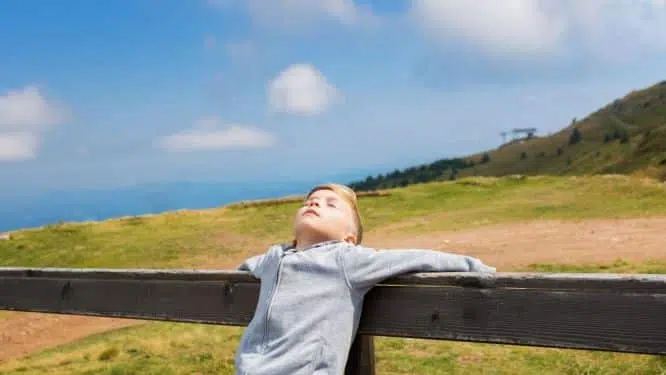
Section 1 – Self-Massage
1. Raining On Your Head
This activity is a great way to begin with self-massage.
Pretend it’s raining. The children are going to make a pitter pattering action with their fingers. Encourage them to gently let their wiggling fingers touch their head, go down their face, their neck, shoulder, arms, belly, legs, knees, onto their toes, and all the way back up.
Imagine how wet you are.
But then brush all the water off you with your hand.
Imagine the sun coming out and drying you off. Close your eyes and feel the warmth of the sun. Take several deep breaths, enjoying the sun’s heat.
2. Hand Massage
Self-massage can be an excellent source of stress-relief. It also helps us connect with our bodies.
Some really simple exercises to start off with hand massage include:
i) Simply shaking your hands gently
ii) Gliding your index finger and thumb along the fingers on your other hand, going up and down one finger at a time
iii) With your thumb, making circles on the heel of the other hand
iv) Making circles with your thumb in the palm of the hand
v) Stroking the back of the hand with your fingers in a circular motion
3. Foot Massage
This is best done in bare feet.
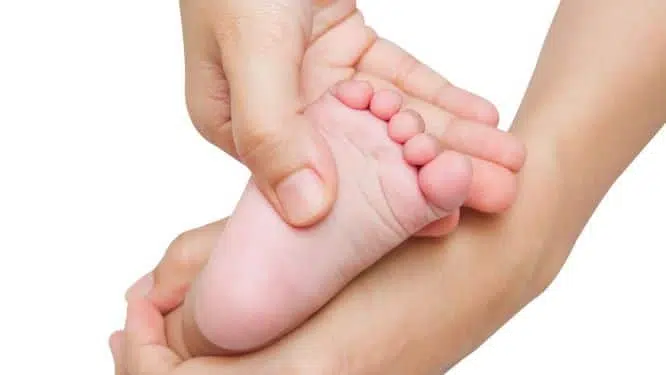
It is also easiest to be seated in a chair. Ask the children to bring one of their feet up on to their opposite thigh.
Some great starting points for foot massages are:
i) Make their foot and ankle as floppy as possible, and give their foot a good wiggle
ii) Massage the whole foot with your thumb. Move along the foot from the heel, across the arch, to the toes and then back
iii) Hold each toe and circle it a few times one way, and then a few times the other way
iv) Stroke each toe from the base to the nail and back
v) Stroke the top of the foot with the fingers, back and forwards or in a circle
4. Pressure Points
Simple massaging of some key pressure points is another good stress reliever.
Before you start, it’s good for the children to be calm, and to have taken a few moments doing some kind of breathing activity (see the Breathing Games chapter).
Head
This is the simplest pressure point massage.
Have the children try to put their pointy finger on the spot in between their eyebrows. Then close their eyes, and circle their finger gently on this spot for a few moments.
Ear
There is a pressure point in the top part of our ear. It is at the apex of the triangle hollow. This point can help ease anxiety and stress, as well as having positive benefits for sleep.
Finding it is the difficult bit with this activity. It is good done as a partners activity, with your friend helping you find the right bit of your ear.
When found, do the same gentle circular exercise on it.
Hand
There is a pressure point in between the index finger and the thumb. It’s basically underneath the webbing in this part of the hand.
Put your pointy finger on this area, and gently circle.
Quick safety tip – this area is supposed to be linked with labour, so pregnant staff should avoid demonstrating this exercise.
Section 2 – Breathing Exercises
What’s the big deal about breathing?
Deep breathing calms us down. It lowers the heart-rate. It also reduces the amount of adrenalin in children’s bodies.
Telling children just to breathe deeply alone isn’t going to work. You need to make breathing into a game.
All these activities have an element of role-play and make-believe. Also, if you can involve a few toys or props, then so much the better.
5. Bumble Bee Breathing
The idea of this game is to hum like a bee.
Demonstrate what a bumble bee sounds like. Then the children will have a go.
They are going to breathe in silently through their noses, and then breathe out whilst humming at the same time. This creates an enjoyable and relaxing sensation in the mouth.
When they have had a go a few times, they can put their hands over their ears as they breathe out. This will make them aware of the sensation of the vibrations coming through their heads.
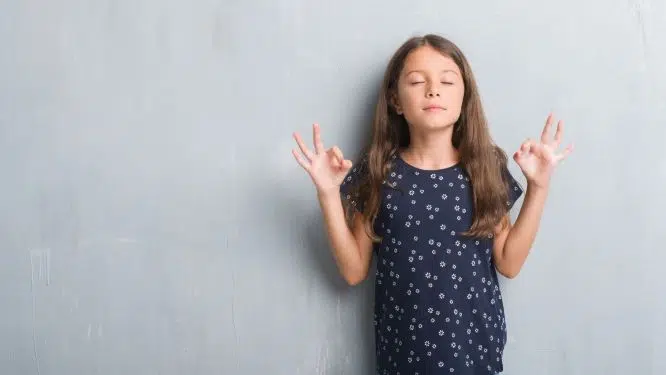
6. Teddy Breathing
In this game every child needs some kind of toy. The standard way is to use teddy bears, but you could also use something like puppets, or a cuddly toy that is not a bear (such as a rabbit as a random example).
The children lie in a space on their backs, and they put the teddy (or toy) on their chest.
They watch the toy, and see how it moves. It will be rising and falling gently with their breathing.
This is an excellent game for developing breath control.
You can try some of the following things:
i) Try breathing in and out quickly – what happens to the bear?
ii) Try holding your breath for a few moments, and see how still the bear can be
iii) Try breathing in and out really slowly
This game helps children children focus their minds on the bear and their breathing in a really fun and child-friendly way.
7. Feather Breathing
Pretty much all of these activities in this article require only a bare minimum of resources, that are either free or extremely cheap.
For this game you need a bag of coloured feathers.

Give out one feather to each child.
Demonstrate to put the feather in their hand. Then take a deep breath in a blow the feather out of their hand.
Let the children have a go.
Now for the next step, which is a bit trickier. Put the feather back into your hand, and you are going to demonstrate how to blow onto it really gently, so that the feather stays in your hand.
Let the children have a long go of this, blowing gently on the feathers, watching them rustle but stay in their hands.
8. Breathing Out Colours
There is quite strong psychological link between colors and emotions.
Many people, for example, associate yellow with sunlight and happiness. Of course, these associations are subjective, and will change from person to person. But this ‘breathing out colors’ game is all about imagining a color, and filling the world with it.
To start with, get the children to close their eyes.
Ask them to imagine a color that makes them feel happy. With younger children, it may be best to suggest a color to them, for example, yellow.
The children are going to breathe in, and then when they breathe out they are going to imagine the room filling with the color.
They keep on breathing in and out, and filling the room with color. This is a great game for visualisation and concentrating your mind, as well as combining with all the deep breathing that goes with it.
Further breathing ideas – if you’re looking for more breathing activities, then I’ve written a whole article about the top 15 games that you can read here.
Section 3 – Mindful Movement
Children will often relax much better when they are moving. The following games help children relieve stress whilst playing in a fun and active way.
9. Noisy Running
This is a really crazy one to warm up with! But they really love this game.
Basically the children are going to be moving in different ways, and they will be making noises that are connected to their movements. When they walk, they make a really quiet noise. When they jog they make a louder noise, and when they run fast they make the loudest noise they can!
Any kind of noise is fine. Something like ‘arrgh!’ is the standard.
The adult’s role is to support and encourage them.
It’s a good idea to start off quite structured with this. Ask them to walk (with quiet voices).
Then jog. Then run!
Flip between the different movements.
The really loud running is really liberating, and is a moment of letting everything go.
You can have a mindful moment after the yelling. Signal for them to stop in some way, and ask them to close their eyes. What does their heart feel like? How does their body feel?
10. Heartbeat Statues
This is a very simple concept. It is a bit like musical statues, but with an element of mindfulness thrown in.
Have at least two different types of music – one slow and beautiful, the other more hectic and fast-paced. You could potentially have several types of music – if you are able to flit between them quite quickly.
Put the slow music on, and encourage the children to dance to it in a languid and relaxed manner. At any given moment, turn the music off, and the children are going to freeze and feel their hearts. How do they feel?
Then put the fast-paced music on, and encourage much more energetic dancing for a while. When the music goes off this time, what do their heart beats feel like?
How do their heart beats change from immediately after the fast music goes off, to half a minute later?
Continue with different types of music.
This feeling your heart idea can be thrown into many different movement games.
For more active listening games such as this one, check out my article about the top 17 activities.
11. Eagle Flying
There are several great imaginative ways of combining breathing and movement.
This flying like eagles game is fantastic for this. The children are going to flying around slowly, pretending to be eagles, and slowly beating their arms (‘wings’) up and down.
You breathe in when your wings go up, and out when your wings go down.
Section 4 – Yoga
The important thing with trying yoga with children is to make it relevant to their age.
I try to link all poses to animals, or superheroes, or things like that which they understand.
Here are some of the best simple yoga poses for children:
12. Imaginary Trees
Trees are a popular choice for child-friendly yoga.
Most children have experienced trees, and understand how they stand, move, and are rooted to the ground. All these features can be imitated through yoga.
This is a movement activity combined with visualisation.
Ask the children to stand tall like a tree. Put their feet together, and their arms by their sides.
Take two deep breaths, close their eyes, and ask them to focus on their feet. Imagine them being rooted into the ground like the roots of a tree.
Encourage them to feel their roots growing into the ground.
Then get them to imagine this growth spreading upwards through their bodies. They lift their arms, and put them out wide like branches.
Now imagine there is some wind. Their arms will sway like branches. Imagine the wind getting stronger, which increases the swaying. Swing your arms from side to side, sway backwards and forwards.
At last the wind will stop. Feel the stillness, feel the balance, and think about how you feel.
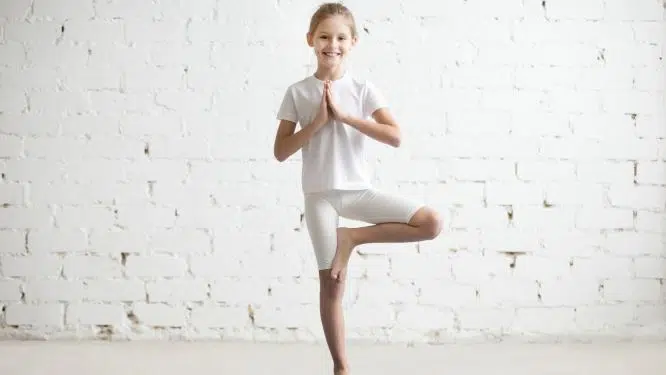
Animal Poses
One of the easiest ways to teach yoga poses is linking them to different animals. Some already have animal names, such as ‘downward facing dog.’ Others, you can link to an animal with just a bit of imagination (such as ‘giraffe pose’).
13. Seal Pose
Lie flat on your belly. Put your hands on the floor near your head, and push upwards until your arms are straight.
14. Giraffe Pose
Stand with one foot in front of the other. Raise both arms together as high as you can go. Stay like this for a few moments, then slowly circle your arms downwards until you try to touch your feet. Once again try to hold, before repeating.
15. Downward Facing Dog
The idea of this is to make a upside down ‘v’ shape with your body. With your hands on the floor in front of you, and feet also on the ground, push yourself up. Your back and legs should be straight, with the corner of the ‘v’ your mid-section.
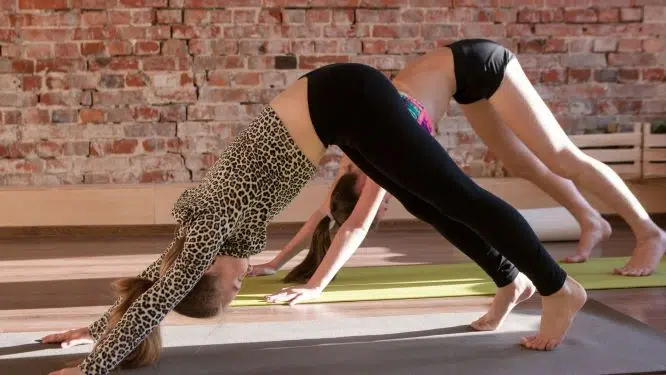
16. Turtle Pose
Lie on your back, and then make your body into a ball by pulling up your knees to your belly, and hugging your legs with your arms.
Now you are going to try to rock backwards and forwards like a turtle in a shell.
17. Fox Pose
The children go in a plank position, only with knees on the ground. They raise one arm, and the opposite leg upwards until they are level with their body. Then they put them down, and raise the other leg and arm.
Keep going like this.
Animal Poses With Sound Effects
Although it’s not the traditional way to perform yoga, some of the animal poses can be combined with some sound effects. This is a brilliant way to start for really young children, and also combines movement with ‘letting go.’
18. Snake Pose
The children lie on their bellies. They put their arms behind their backs, and try to raise their head and shoulders off the floor.
Go, ‘ssssss!’
19. Frog Pose
With feet on the floor and shoulder-width apart, crouch down, with your hands on the floor in between your feet. Make a noise like a frog – ‘rebbit, rebbit.’
20. Lion Pose
Kneel on the floor, and put your hands down, with arms straight, so that you are on all fours. Put your head up high, curve your back, and roar!
21. T-Rex Eyeball
This is a great game for any dinosaur enthusiasts out there.
Get something that will be the ‘T-Rex Eyeball’. Something like a pebble would be good, or a spot on the ground.
The children are going to look at the object, and try to balance on one leg.
The T-Rex can’t see them if they don’t move. It’s as simple as that.
Looking at an object really helps them to balance, and it also helps focus and mindfulness.
Section 5 – Peer Massage
There are lots of very simple massages that children can carry out on each other. Many of these involve ‘shapes’. If the children know a shape that they are trying to draw on a certain part of their partner’s body, then it makes the process really easy for them to understand.
Here are some great ones to try:
22. Hearts
You start with your hands either side of your partner’s spine, about half way up their back.
Draw a ‘heart’ shape, by pushing up and round towards the shoulders, before sloping down to the start point.
Repeat this movement several times.
23. Spectacles
With two flat hands, make circles around the shoulder blades several times. These are the circular frames of the spectacles. Then push out in a line towards the shoulders (those are the legs).
Repeat this process.
24. Butterfly
Start with two hands flat in the middle of the chest, either side of the spine.
Make a clockwise circle with the right hand, followed by an anti-clockwise circle with the left. This motion draws a butterfly shape.
Peer Massage (Movements)
Here are some simple peer massage techniques that have a simple imaginary movement as the main exercise.
25. Brush The Horse
Start with one hand near your partner’s head and stroke down the side of the spine to near the bottom of their back.
Then stroke down the other side of the spine with your other hand.
26. Kneed The Dough
This ifs a classic ‘shoulder massage’. Put both hands on the two shoulders, and squeeze them gently, like a ball of dough.
27. Bear Walk
Put your hands on either side of the spine, near the base of the back. The child’s hands are the bear’s feet. Walk them slowly up the other child’s back.
28. Ice Skating
They put their hands on either side of spine. Move hands up and down the spine. When one hand is going up, the other should be going down, and vice versa.
Final Thoughts
We live in such a busy and stressful world, and taking time to play simple relaxation games such as the ones above make a huge difference to children.
Learning to relax early in your life can be one of the most important skills you will ever learn.
Take the time to play one of these relaxation games today.
